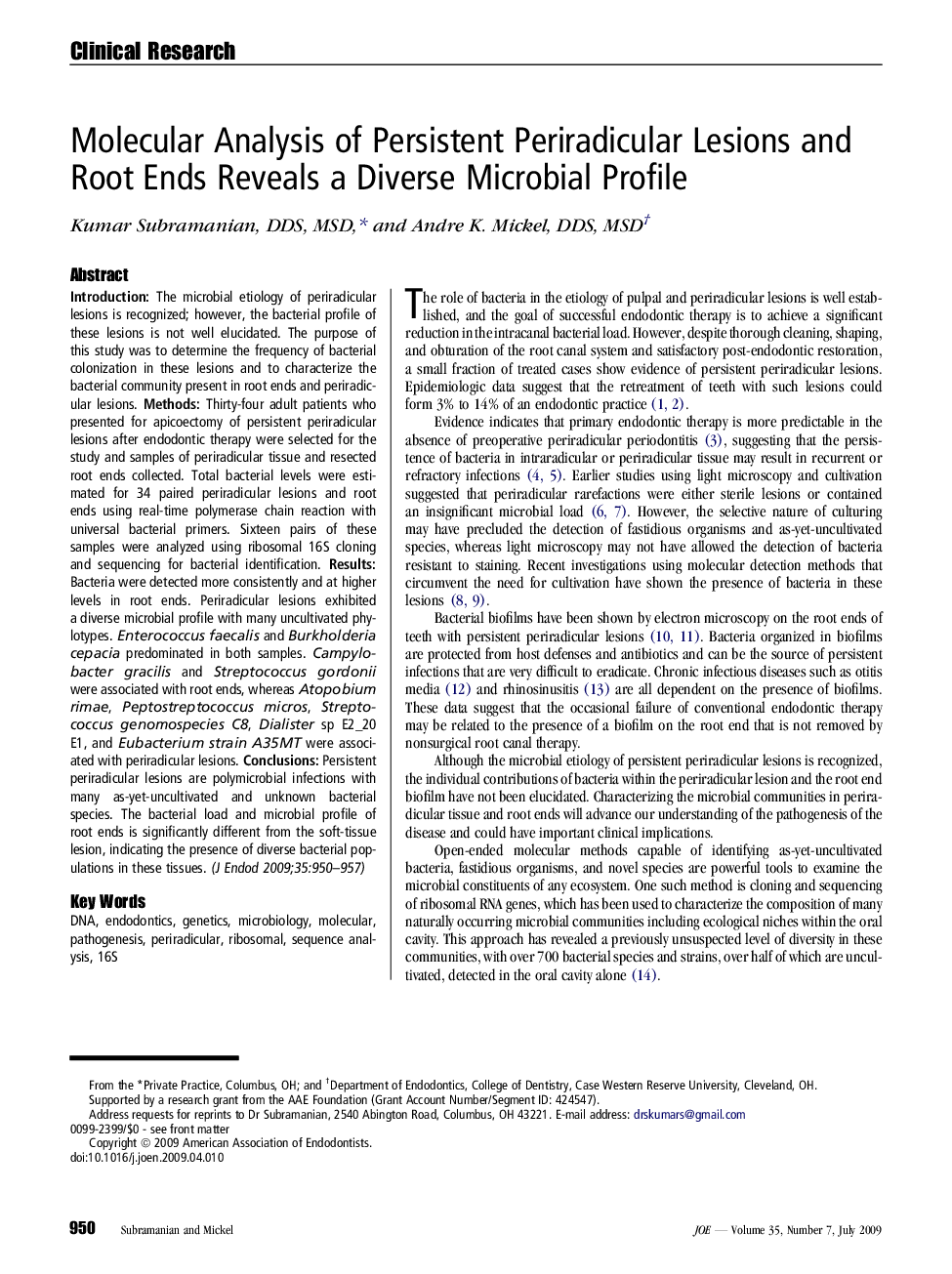| Article ID | Journal | Published Year | Pages | File Type |
|---|---|---|---|---|
| 3148505 | Journal of Endodontics | 2009 | 8 Pages |
IntroductionThe microbial etiology of periradicular lesions is recognized; however, the bacterial profile of these lesions is not well elucidated. The purpose of this study was to determine the frequency of bacterial colonization in these lesions and to characterize the bacterial community present in root ends and periradicular lesions.MethodsThirty-four adult patients who presented for apicoectomy of persistent periradicular lesions after endodontic therapy were selected for the study and samples of periradicular tissue and resected root ends collected. Total bacterial levels were estimated for 34 paired periradicular lesions and root ends using real-time polymerase chain reaction with universal bacterial primers. Sixteen pairs of these samples were analyzed using ribosomal 16S cloning and sequencing for bacterial identification.ResultsBacteria were detected more consistently and at higher levels in root ends. Periradicular lesions exhibited a diverse microbial profile with many uncultivated phylotypes. Enterococcus faecalis and Burkholderia cepacia predominated in both samples. Campylobacter gracilis and Streptococcus gordonii were associated with root ends, whereas Atopobium rimae, Peptostreptococcus micros, Streptococcus genomospecies C8, Dialister sp E2_20 E1, and Eubacterium strain A35MT were associated with periradicular lesions.ConclusionsPersistent periradicular lesions are polymicrobial infections with many as-yet-uncultivated and unknown bacterial species. The bacterial load and microbial profile of root ends is significantly different from the soft-tissue lesion, indicating the presence of diverse bacterial populations in these tissues.
